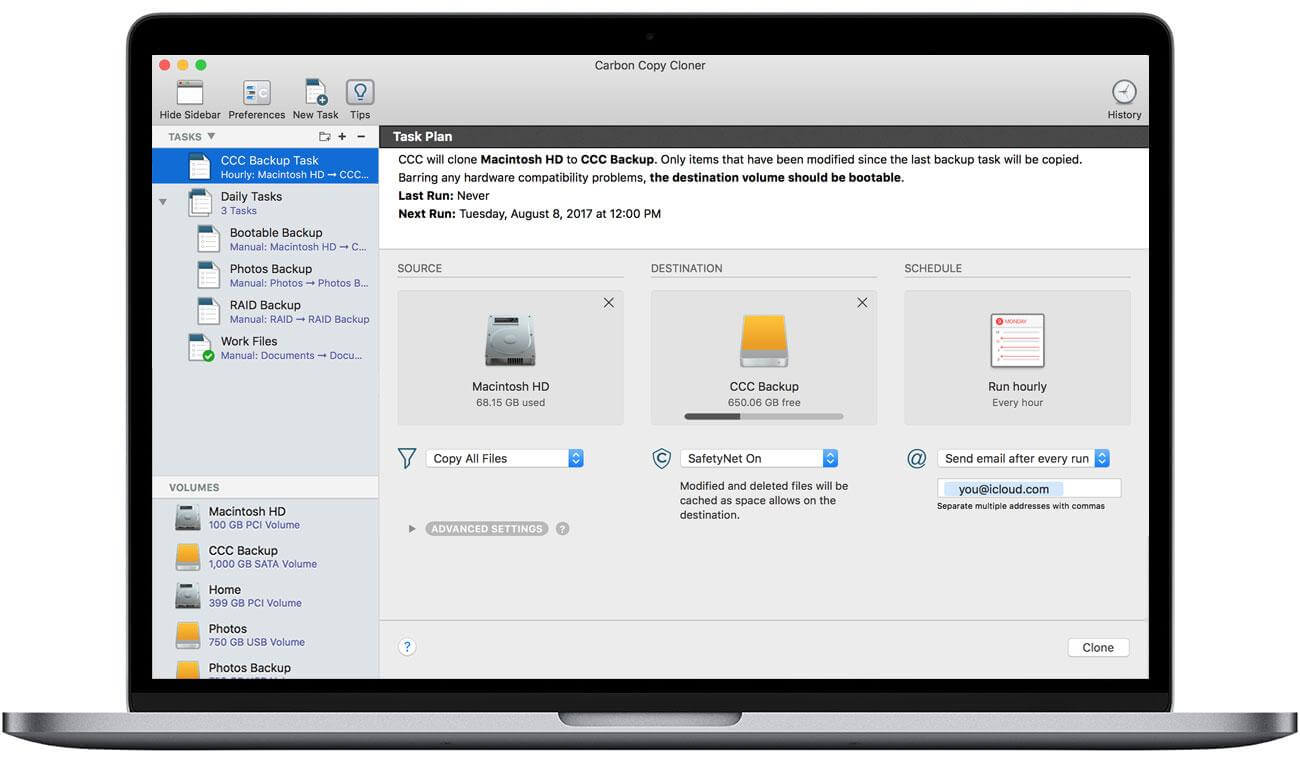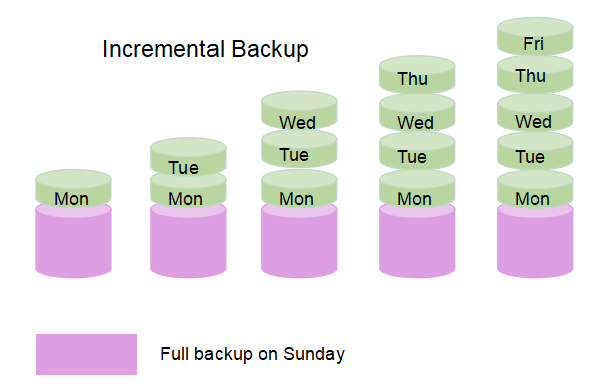

- #Mac backup software incremental how to#
- #Mac backup software incremental mac os x#
- #Mac backup software incremental update#
- #Mac backup software incremental full#
#Mac backup software incremental update#
Some products can even update a disk image nearly continuously. This contains every bit of data on the drive and offers stronger protection, since it enables you to recreate a system after a hard drive failure. In any case, the incremental changes don't eat up a ton of space.Ī step further than the simple copying of files is copying the entire hard drive, including system files, as what's called a disk image. I recommend maxing this out, especially when you're storing backups locally, with no annual fee for hosted online backup. This lets you specify how many previous versions of your files you want to preserve, and for how long. Another option offered by many backup applications is versioning. Using both of these is a good idea if the data you're backing up is at all sensitive.
#Mac backup software incremental full#
With incremental, you need the latest full backup and all the intermediary backup data to restore a file to its original state, whereas with differential, you just need the last set of differential backup data and the first full one.Ī couple of security options are usually available when setting up your backup: password protection and encryption. Incremental backup saves system resources by only backing up changes in files from the last incremental backup, and differential backup saves all changes from the last full backup. The first is pretty obvious-all the data you've selected for backup is copied in its entirety. More granular options include whether backups are full, incremental, or differential. Several products here offer this continuous backup option. Most backup software lets you schedule scans of your hard drive for new and changed files daily, weekly, or monthly, but my preferred option is to have the software continually (or at least, say, every 15 minutes) monitor your drive for changed or new files. Should you lose the files, either through disaster or simply by deleting them or overwriting them, you can just restore them from the saved copies.īut in order for this to work, the copies of your files must be updated regularly. That storage can be another drive, an external drive, a NAS, a rewritable disc, or an online storage and syncing service.

The concept behind backup software is pretty simple: Make a copy of your files on storage separate from your main hard drive.

Both of these are well worth running, but they both have some limitations, lacking some of the extra benefits you get from running standalone backup software. Windows 10 ($139.00 at Microsoft Store) includes a File History feature and a full disk backup feature, and OS X includes its Time Machine software.
#Mac backup software incremental mac os x#
With digital content becoming paramount for not only business assets-documents, plans, financial spreadsheets-but also for personal assets such as family photos, videos, and music, protecting with backup software is more important than ever.īoth Windows and Mac OS X have beefed up their built-in backup tools in recent years. Sometimes it's not even the fault of the technology: Fires, flooding, and other natural disasters can render PCs and other tech hardware inoperable. Hard drives are notorious for crashing, and ransomware can make a computer's contents inaccessible. All technology, whether it's a brand new iMac, a spaceship, a hover board, a webmail service, or a ten-year-old PC running Windows Vista, can potentially take a sudden nosedive. If it can happen to a big corporation like Delta, don't think it can't happen to you. In August of 2016, Delta Airlines had to cancel more than 1,300 flights, at a cost of $100 million, not because of weather or mechanical problems, but because the company's computer systems went down.

#Mac backup software incremental how to#
How to Choose the Right File Sync & Backup Why Back Up Your PC?


 0 kommentar(er)
0 kommentar(er)
